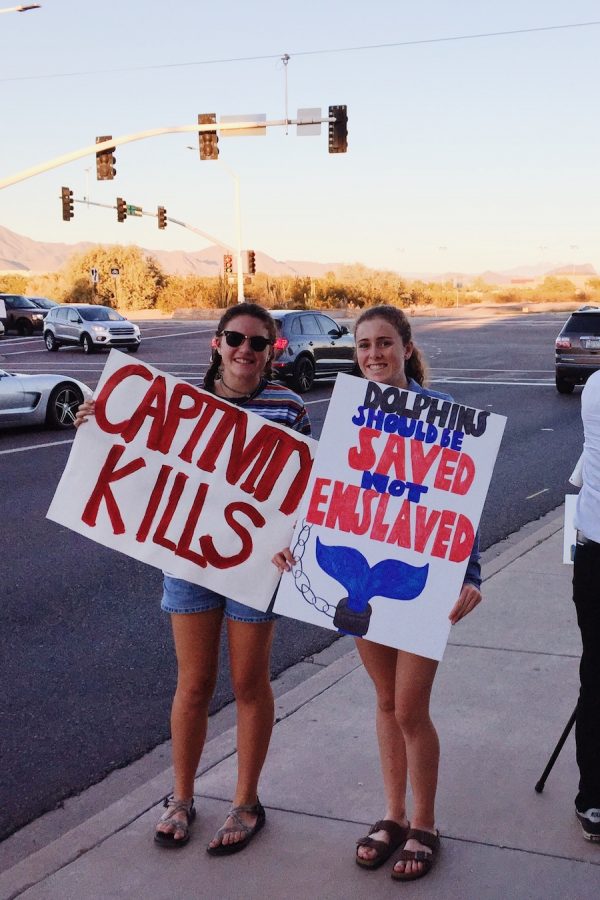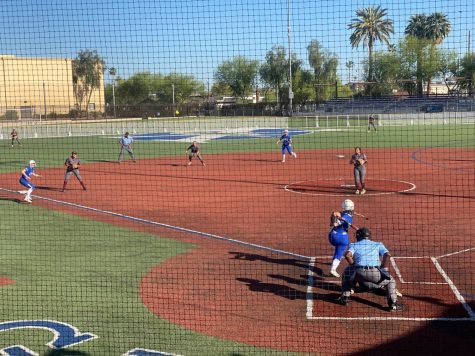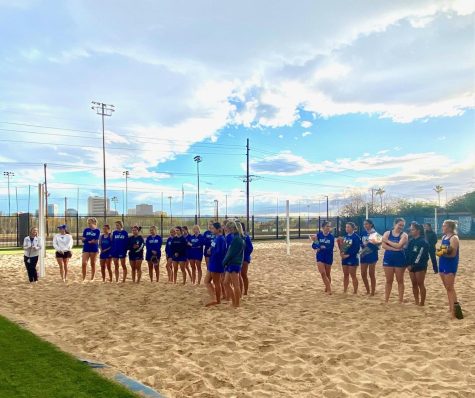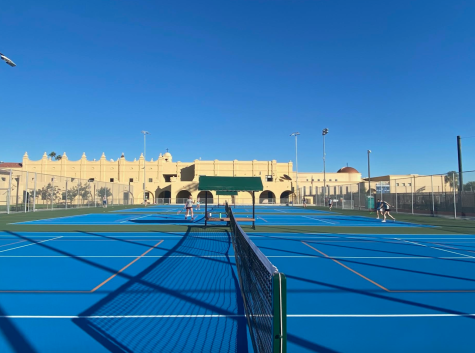A risky business: the opening of “Dolphinaris”
“For most of the wild things on Earth, the future must depend upon the conscience of mankind.” -Dr. Archie Carr
Helen Innes ’19 and Caroline Liddy ’18 protest the mistreatment of dolphins.
On Saturday, Oct. 15, Dolphinaris opened its doors. Located in Scottsdale, Arizona, just within the Salt River Pima-Maricopa Indian Community, Dolphinaris offers one-on-one interactions with dolphins on dry land or in water. Visitors are able to personally swim with dolphins and are encouraged to learn about ocean conservation efforts.
This business plan sounds like fun to many heat-stricken, ocean-deprived “Arizonans” at first glance. I, just like you, enjoy swimming with marine life and interacting with a diverse variety of ocean mammals. This is all that Dolphinaris wants to offer, right? However, deep within Dolphinaris’ tanks and concrete buildings, the truth is surfacing about the treatment of its dolphins.
The same day that Dolphinaris opened, I joined 200 other demonstrators to protest the grand opening. This was not a violent protest that you might hear about on the news, but rather a peaceful and respectful protest for the animals most affected by this magnificent grand opening: dolphins. The problem with Dolphinaris is not the enjoyment of swimming with these beautiful creatures or the education that is provided. The issue is that dolphins, unlike the customers at Dolphinaris, are not having so much fun.
According to Us.whales.org, “Whales and dolphins are highly intelligent.… [However,] In captivity they will usually have been separated from their families, often in cruel hunts and some when they are young.” Examples of such “cruel hunts” can be seen by simply googling or watching The Cove, a movie documenting how and where many show dolphins are caught. Additionally, in captivity, dolphins are forced to adapt to a concrete tank that is not nearly as expansive as the open ocean where they swim upwards of 100 miles a day. The death rate for dolphins in captivity is exponentially higher than in the wild. The amount of stress that the dolphins endure weakens their immune system and makes the animals more susceptible to diseases.
The protest on Oct. 15 on a Scottsdale street corner near the dolphin facility stood up for the dolphins who were imported from Mexico, separated from their families and forced to swim with humans. The fundamental right of animals to protect and populate our sapphire-blue oceans is being violated in hopes of increased cash flow and for human amusement. For these reasons and many more, my friend and I joined a protest to educate the public about what is going on in their backyard and what they can do to stop the company’s advancement.
More information about freeing the dolphins from Dolphinaris can be found at http://dolphinfreeaz.com.








